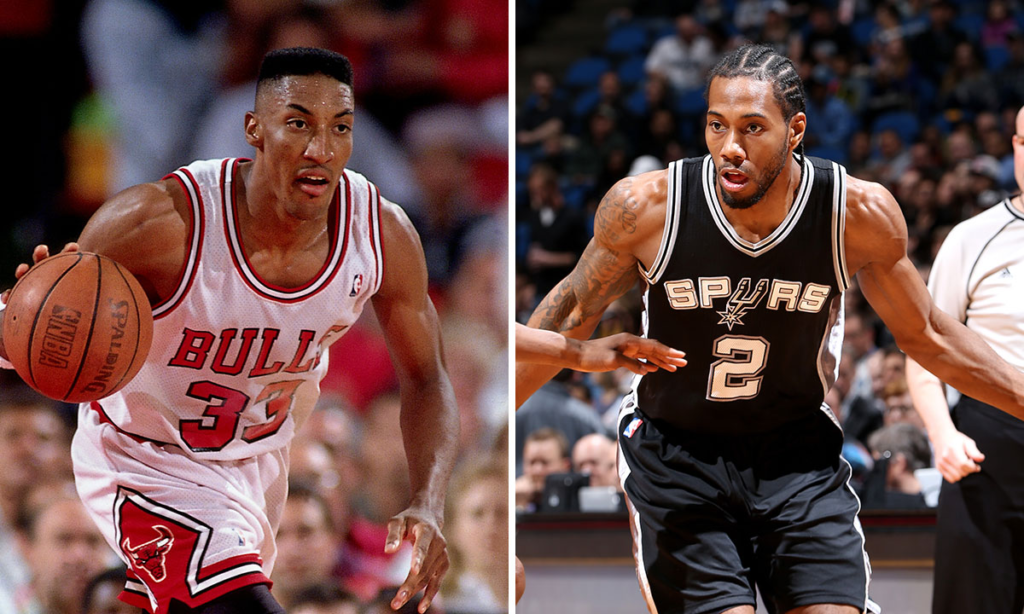
NBA Hall of Famer Scottie Pippen, widely regarded as one of the greatest perimeter defenders in league history, is embracing the evolution of the game he helped shape. While some legends of the past often critique the modern era for its pace, spacing, or reliance on the three-point shot, Pippen offers a refreshing perspective: he likes what he sees.
“I kinda like the way the game is going,” Pippen shared.
“I like the way guys shoot the ball.”
It’s a measured and honest response from a six-time NBA champion whose defensive versatility was once a cornerstone of the Chicago Bulls dynasty. Pippen acknowledges that while the game has changed dramatically since his playing days, especially in terms of offensive spacing and shot volume from deep, he’d adapt—just like he always did.
When asked how he’d fare defensively in today’s NBA, Pippen didn’t lean on nostalgia or rest on his accolades. Instead, he gave a candid assessment: “I would not say I would be a great defender in this game,” he admitted. “But I would work to defend in a different way.”
That humility, blended with competitive instinct, speaks volumes. Even as offenses today put a premium on pick-and-roll mismatches, pace, and pull-up threes, Pippen’s length, basketball IQ, and anticipation would remain valuable assets—just deployed differently.
He points to Kawhi Leonard as a modern-day example of how elite defense still matters in today’s scoring-heavy landscape. “I look at a guy like Kawhi, he still is a leader in steals,” Pippen noted.
Like Leonard, Pippen was never one to seek headlines with his words—his impact was in the details: the deflections, the rotations, the one-man fast breaks that turned defense into instant offense. And even now, decades removed from his last game, he’s still breaking the action down with a coach’s eye and a player’s mindset.
In an era where hot takes often drown out nuance, Scottie Pippen remains a rare voice of reason—open-minded, self-aware, and still very much in tune with the game he once dominated.
Pippen’s unique ability to guard multiple positions was revolutionary at the time and would be just as valuable—if not more so—in today’s switch-heavy defensive schemes. He often drew the assignment of defending the opponent’s best scorer, whether it was a point guard, wing, or even power forward, and rarely needed help.
Offensively, Pippen was ahead of his time as a point forward. He could initiate the offense, make reads out of the pick-and-roll, and push the pace off rebounds—all traits that coaches now covet in today’s positionless NBA. His 1993-94 season without Michael Jordan proved just how complete a player he truly was.
One of the underrated parts of Pippen’s greatness was his understanding of spacing, a concept that modern offenses are built around. While the three-point revolution wasn’t in full swing during his prime, Pippen’s off-ball movement, vision, and passing instincts helped create driving lanes and ball movement before analytics made it fashionable.
Even now, players often reference Pippen’s defensive footwork, hands, and transition game in film study sessions. For as much as Michael Jordan was the face of the Bulls’ dynasty, insiders and purists alike know that Pippen was the connective tissue that made it all function smoothly—he was the engine behind the engine.
Kawhi Leonard, in many ways, is today’s embodiment of the Pippen archetype: a silent assassin whose actions speak louder than his words. Much like Pippen, Leonard rarely seeks the spotlight—but commands it through his play on both ends of the floor. Their careers, though separated by eras, are mirrors in mindset.
A two-time Defensive Player of the Year and Finals MVP, Leonard’s calm demeanor hides a relentless competitor. His ability to guard 1-through-4, strip ball-handlers in isolation, and read passing lanes makes him one of the few players in today’s NBA who can truly change a game defensively without fouling.
Leonard’s offensive evolution also echoes Pippen’s arc—initially known as a defensive specialist, Kawhi grew into a go-to scorer. He developed his midrange game, polished his three-point shooting, and added more playmaking to his toolset. Like Pippen, he can slow a game down and take over methodically, rather than explosively.
Both players carry themselves with a quiet toughness that resonates across generations. While today’s NBA celebrates flair, Leonard, like Pippen, is a throwback to a time when substance outshined style. And that’s part of what makes both so beloved by coaches and feared by opponents.
As the game continues to evolve—with increasing speed, skill, and space—players like Scottie Pippen and Kawhi Leonard remain the blueprint. They are reminders that no matter how the rules shift or how analytics trend, basketball still rewards intelligence, adaptability, and elite two-way play.

